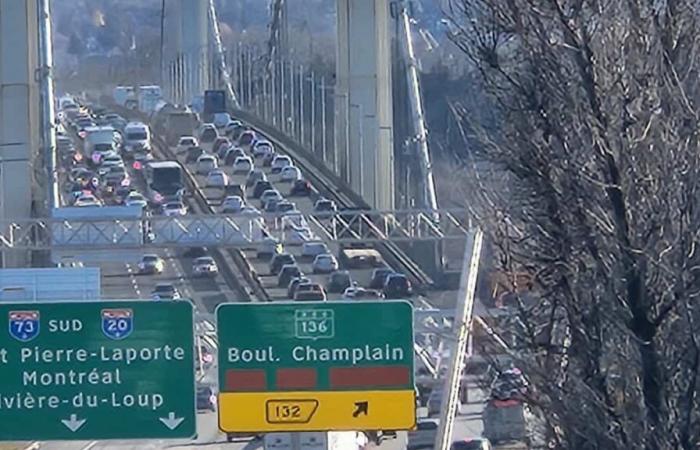
Even if road traffic on the Pierre-Laporte bridge is at the same level as in 2017, the mayor of Lévis and the government of Quebec see in the figures revealed by The Journal confirmation of the importance of making a third link. They are contradicted by a mobility expert.
In an article on road congestion, The Journal reported Monday that there was no increase in daily flow on the Pierre-Laporte bridge compared to pre-pandemic figures for 2017. This despite the work which caused, this fall, a considerable reduction in the number of cars circulating on the Quebec Bridge.
According to Gilles Lehouillier, this is data militating in favor of the mega-project for a motorway link between the two banks.
“We will quickly catch up to pre-pandemic levels. The capacities of the Laporte bridge are clearly exceeded. Its daily capacity of 89,000 [voitures par jour] has been achieved since 2009. We have added population to Lévis. So, it can’t work like that,” underlined the mayor of Lévis.
Economic security
Similar reasoning from the minister and deputy for Lévis, Bernard Drainville.
“It takes one [troisième lien]. It’s not complicated, it takes one,” he reiterated, evoking in particular the argument of economic security put forward by his government for several months. “If for one reason or another it was necessary to do work on [le pont] Laporte and this work had to last, we will be forced to pass the trucking over the Trois-Rivières bridge. Let’s see, that doesn’t make any sense,” he said.
Also in favor of a third link, the municipal opposition of Repensons Lévis said it was very sensitive to the argument of economic security.
Not necessary
However, Marie-Hélène Vandersmissen, full professor and vice-dean of studies in the Department of Geography at Laval University, does not subscribe to this argument.
According to her, “the figures confirm that this third link is not necessary (as previous Origin-Destination surveys and as the CPDQ Infra report also indicated). There is unanimity among transportation experts across Canada and elsewhere in the world on this issue: adding highway or road lanes in an urban area does not solve congestion.
The expert added that “traffic seems to have increased especially on the Félix-Leclerc highway. And during rush hours, there is congestion on most highways in the urban region of Quebec (and increasingly at other times). This famous third link would undoubtedly worsen this congestion. So, the solution proposed by Minister Drainville will only make the situation worse.”
According to Étienne Grandmont, member of Québec Solidaire, “people in the National Capital are tired of not having an alternative to cars and traffic. No offense to Mr. Drainville, the solution is public transportation. Not a third link at $10 billion which will make congestion worse.”
– With the collaboration of Daphnée Dion-Viens and Geneviève Lajoie
Do you have any information to share with us about this story?
Write to us at or call us directly at 1 800-63SCOOP.





